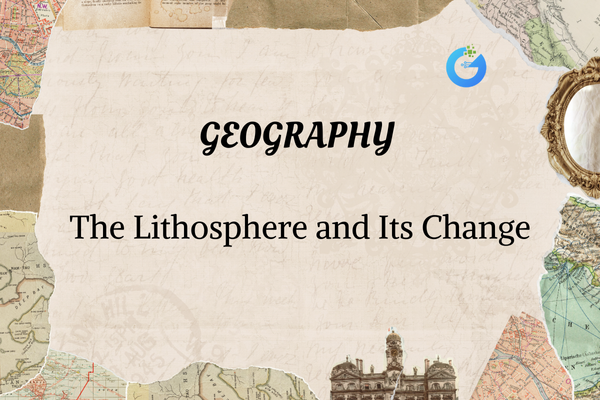Introduction – What Are Forests?
Forests are vast regions that are mainly covered by trees, plants, and various other types of vegetation. These natural landscapes can be found all over the world, ranging from the warm, lush tropical rainforests near the equator to the cold, dense coniferous forests in the polar regions. Forests are much more than beautiful, peaceful places for humans to visit—they are essential to the survival of life on Earth. They provide a wide array of resources and benefits not just for humans, but for wildlife too.
In this lesson, we’ll explore why forests are so important and what makes them vital for our planet!
expert-led Biology classes – visit our website to learn more
Forests and Oxygen – The Breath of Life
One of the most important roles forests play is the production of oxygen. Trees and plants absorb carbon dioxide from the atmosphere and release oxygen during the process of photosynthesis. This process helps maintain the balance of gases in the atmosphere, which is necessary for all living creatures to breathe.
Did you know? A single tree can produce enough oxygen for two people to breathe for a year! That’s how vital trees are to sustaining life on Earth.
Moreover, by absorbing carbon dioxide, forests help reduce the amount of this harmful greenhouse gas in the atmosphere. This helps combat climate change, as less carbon dioxide means less heat-trapping in the atmosphere.
Forests and Biodiversity – Homes for Wildlife
Forests are home to over 80% of the world’s terrestrial species, which includes animals, plants, and insects. These ecosystems are incredibly diverse, meaning a huge variety of species live and interact with one another in forests.
Take rainforests, for example. They are home to a wide range of animals like jaguars, monkeys, toucans, and countless other species of insects. These forests, with their dense canopy and diverse plant life, create a unique environment for many species.
In temperate forests, you’ll find animals like deer, foxes, squirrels, and a range of bird species, along with various types of plants and insects. Boreal forests in cold regions support animals like moose, wolves, and snowy owls.
Forests not only provide food and shelter to these creatures but also serve as breeding grounds, ensuring that species can thrive. They are essential to preserving the diversity of life on Earth, a concept known as biodiversity.
Forests and Climate Regulation – Keeping the Earth Cool
Forests play a crucial role in regulating the Earth’s climate. By absorbing and releasing water through their roots and leaves, they help maintain the water cycle. This cycle is essential for balancing rainfall and temperature, ensuring that ecosystems can continue to thrive.
Additionally, forests prevent soil erosion, where land is worn away by wind and water. The roots of trees act as anchors, holding the soil together and reducing the risk of floods and landslides. Without trees, the soil would become loose and vulnerable to being washed away.
Moreover, forests act as natural carbon sinks. This means they absorb and store large amounts of carbon dioxide from the atmosphere, helping to slow down the process of global warming. The more trees we have, the more carbon dioxide is removed from the air, and the cooler the Earth stays.
Without forests, the Earth’s temperature would rise significantly, leading to extreme weather events such as droughts, floods, and severe heatwaves becoming more common.
Forests and Human Life – Essential for Our Well-Being
Humans rely on forests for a wide range of reasons. They provide valuable resources that we use daily, including:
- Wood: Forests supply wood used for building homes, making furniture, and creating paper products.
- Medicinal plants: Many of the medicines we use today come from plants that grow in forests. These plants are used in treating various diseases and health conditions.
- Food: Forests offer fruits, nuts, and edible plants. In addition, animals that live in forests are a source of food for many communities around the world.
Beyond resources, forests provide recreational spaces for humans to enjoy. People visit forests to hike, camp, and observe wildlife, which promotes physical and mental well-being. These natural environments help reduce stress, improve mood, and provide opportunities to learn about the natural world.
Forests and Water – Protecting Our Water Sources
Forests are vital for maintaining clean and abundant water supplies. The roots of trees help filter water as it passes through the soil, improving the quality of water in rivers, lakes, and underground aquifers. Forests also help in regulating water flow, preventing floods and ensuring that water is available in the dry season.
However, when forests are cleared or destroyed, the natural water cycle is disrupted. This leads to issues like droughts, water scarcity, and poor water quality. Forests are key to ensuring that our water supplies remain clean, plentiful, and well-distributed.
FAQs – The Importance of Forests
Q1: Why are rainforests called the “lungs of the Earth”?
Rainforests are called the “lungs of the Earth” because they absorb carbon dioxide and release oxygen, much like our lungs do. This makes them incredibly important for maintaining the balance of gases in the atmosphere.
Q2: How do forests help prevent climate change?
Forests help prevent climate change by acting as carbon sinks, absorbing carbon dioxide from the atmosphere. This reduces the amount of greenhouse gases that contribute to global warming.
Q3: What would happen if all the forests were cut down?
If all the forests were cut down, it would lead to a dramatic increase in carbon dioxide in the atmosphere, causing global temperatures to rise. This would result in the loss of biodiversity, soil erosion, and disruptions in the water cycle.
Fun Facts About Forests
- The Amazon Rainforest is the largest tropical rainforest in the world and is often referred to as the “planet’s lungs” because of its massive oxygen production.
- Forests can be found in nearly every country on Earth, from lush tropical jungles to cold, boreal woodlands!
- The Black Forest in Germany is famous for inspiring fairy tales, such as the story of Hansel and Gretel.
Conclusion – Why We Must Protect Forests
Forests are indispensable to life on Earth. They provide oxygen, regulate the climate, protect wildlife, supply valuable resources, and support human well-being. As we face increasing environmental challenges, it is crucial that we protect and conserve forests to ensure they can continue providing these essential benefits for future generations.
We can all make a difference by planting trees, reducing paper usage, and supporting sustainable forestry practices. Every small effort counts!








